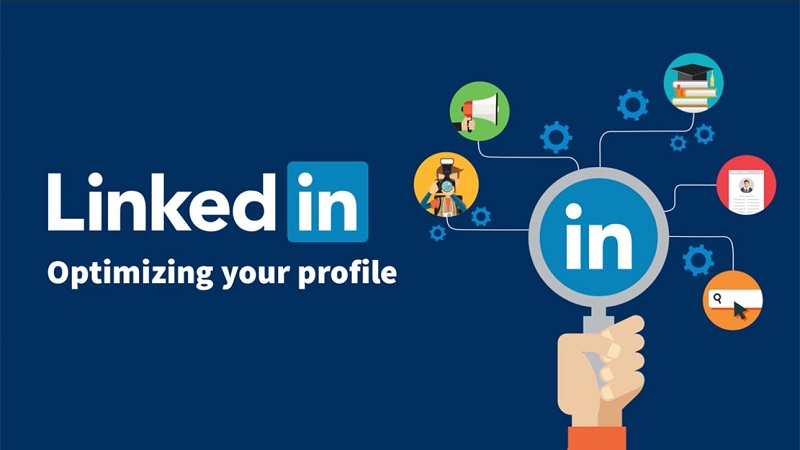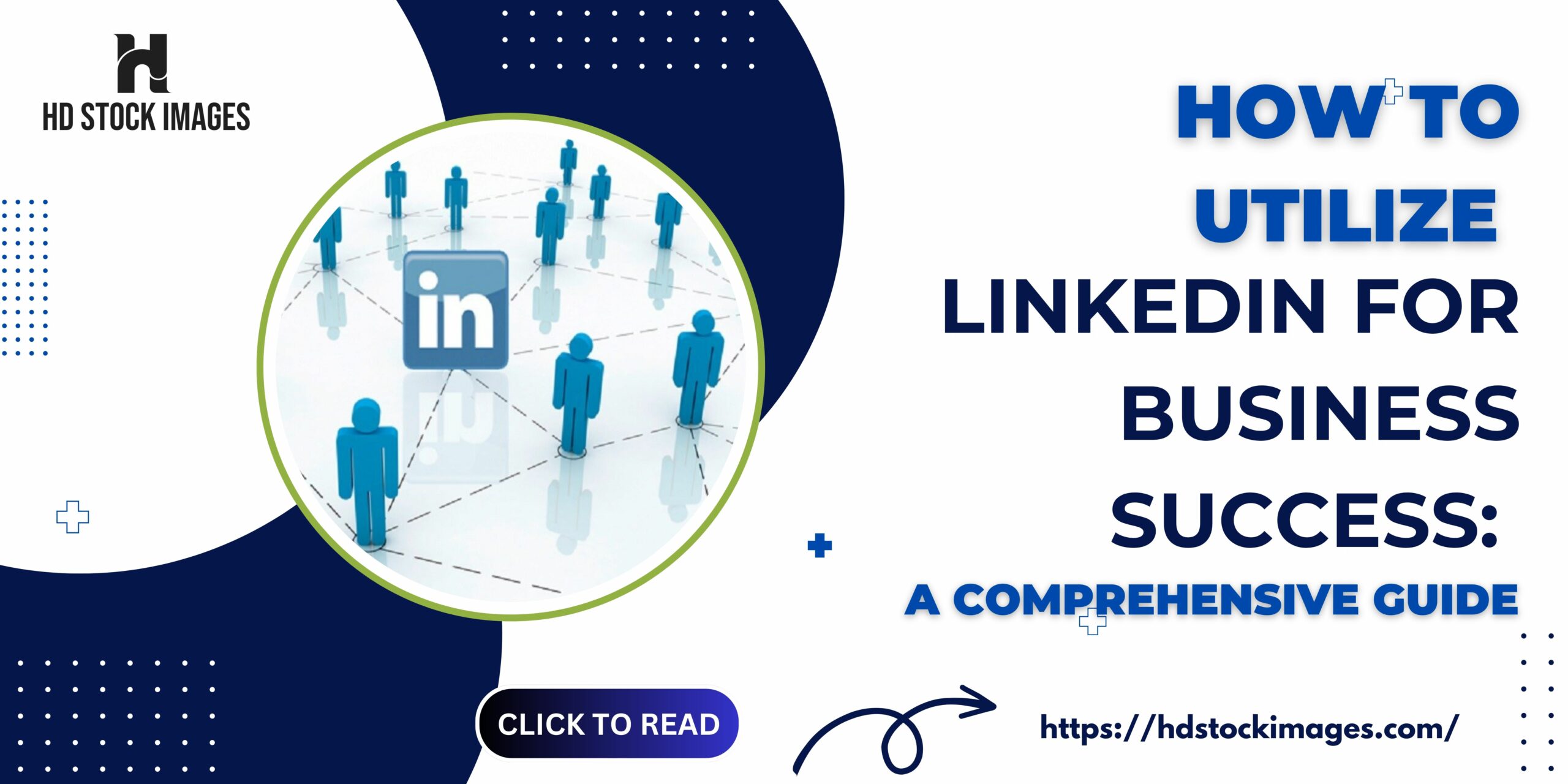1. Introduction
2. Optimizing Your LinkedIn Profile

a) Choose a professional profile picture
Select a high-quality photo where you appear approachable and professional. Dress appropriately for your industry, maintain good lighting, and ensure a clear background.b) Craft a compelling headline
Your headline should grab attention and succinctly convey your professional identity. Use relevant keywords and highlight your unique value proposition to attract the right audience.c) Write an engaging summary
Your summary is an opportunity to tell your professional story and showcase your expertise. Be concise, yet compelling, and emphasize your key achievements, skills, and career goals. Incorporate relevant keywords for search optimization.d) Highlight your experience and skills
Provide a comprehensive overview of your professional experience, including job titles, responsibilities, and notable achievements. Use bullet points to make it easy to scan. In the skills section, include industry-specific keywords and endorse others to receive endorsements in return.e) Leverage multimedia and links
Take advantage of LinkedIn's multimedia capabilities by adding visual elements such as presentations, videos, or portfolio samples. Include links to your website, blog, or other relevant resources to provide additional context and credibility.f) Stay active and engaged
Regularly share valuable content, engage with others' posts, and participate in relevant groups and discussions. This showcases your expertise, expands your network, and boosts your visibility.Remember to keep your profile updated, stay active, and regularly review and refine your information to reflect your evolving career journey.3. Building a Strong Network
a) Define your networking goals
Clarify your objectives and identify the types of professionals you want to connect with. Determine whether you seek industry experts, potential clients, partners, or mentors.b) Optimize your invitation strategy
When sending connection requests, personalize your messages to establish a genuine connection. Mention shared interests, mutual connections, or specific reasons for connecting to increase the likelihood of acceptance.c) Connect with colleagues and acquaintances
Start by connecting with colleagues, former classmates, and acquaintances. They can provide a solid foundation for your network and introduce you to their connections.d) Provide value to your connections
Share valuable content, insights, and resources with your network. Like and comment on their posts, congratulate them on their achievements, and offer support. By providing value, you build rapport and strengthen relationships.e) Leverage LinkedIn introductions
If you want to connect with someone outside your immediate network, request introductions from mutual connections. Personalized introductions increase the chances of building meaningful relationships.f) Attend industry events and conferences
Utilize LinkedIn to identify industry events and conferences and attend them to meet professionals face-to-face. Connect with the attendees and follow up with them on LinkedIn after the event.g) Maintain regular communication
Stay connected with your network by regularly interacting with their content, sending messages to check in, and offering assistance when relevant. Consistent communication helps nurture relationships.By following these steps and consistently engaging with your network, you can expand your professional reach, tap into new opportunities, and foster valuable relationships.4. Creating Engaging Content

a) Identify your target audience
Define the demographics, interests, and needs of your target audience. Understand their pain points and what kind of content they find valuable. This will help you tailor your content to resonate with them.b) Develop a content strategy
Outline your goals, content themes, and posting frequency. Decide whether you'll focus on educational articles, industry news, inspirational stories, or a combination. A content calendar can help you stay organized and consistent.c) Share valuable insights
Create content that provides unique perspectives, actionable tips, and industry insights. Offer solutions to common challenges or share your experiences. Strive to provide genuine value to your audience.d) Utilize different content formats
Mix up your content formats to keep it engaging. Share text-based posts, images, videos, infographics, or slideshows. Experiment with different media types to find what resonates best with your audience.e) Leverage storytelling
Share compelling stories and case studies that connect with your audience emotionally. Stories have the power to captivate attention and make your content more relatable.f) Engage with your audience
Encourage discussions and engagement on your posts by posing questions, asking for opinions, or inviting readers to share their experiences. Respond promptly to comments and foster meaningful conversations.g) Utilize LinkedIn Pulse
Take advantage of LinkedIn Pulse, the platform's publishing platform, to write long-form articles. This allows you to dive deeper into topics and showcase your expertise. Share your articles with your network to expand your reach.h) Optimize your content for visibility
Incorporate relevant keywords in your content and headlines to improve searchability. Use hashtags strategically to increase discoverability and reach a wider audience.i) Stay consistent and authentic
Regularly post content to maintain visibility and establish credibility. Be authentic in your voice and tone. Authenticity builds trust and encourages meaningful connections.Remember to stay consistent, provide value, and adapt your content strategy based on audience feedback and analytics.5. Utilizing LinkedIn Features for Business Growth
a) Showcase your products or services using LinkedIn Pages
Create a LinkedIn Page for your business to highlight your offerings, company culture, and values. Optimize your page with compelling visuals, relevant keywords, and engaging content. Regularly share updates, industry insights, and success stories to engage your audience.b) Run targeted advertising campaigns on LinkedIn
Utilize LinkedIn's advertising platform to reach specific audiences based on demographics, job titles, and interests. Create sponsored content, text ads, or dynamic ads to promote your products, drive website traffic, or generate leads. Leverage LinkedIn's targeting options to ensure your ads reach the right people.c) Leverage LinkedIn Sales Navigator for lead generation
If your business relies heavily on B2B sales, consider using LinkedIn Sales Navigator. It provides advanced search filters, lead recommendations, and personalized insights to help you identify and engage with potential prospects. Use its messaging capabilities to nurture leads and build relationships.d) Utilize LinkedIn Analytics
LinkedIn Analytics provides valuable data on the performance of your content, company page, and advertising campaigns. Monitor metrics such as engagement, impressions, and click-through rates to understand what resonates with your audience. Use these insights to refine your strategy and optimize your efforts.e) Engage with LinkedIn Groups
Join relevant LinkedIn groups where your target audience congregates. Actively participate in discussions, offer insights, and answer questions. This allows you to establish yourself as an industry expert, expand your network, and generate leads.f) Collaborate with LinkedIn Influencers
Identify influential professionals in your industry and engage with their content. Collaborate with influencers by featuring them in your content or partnering on joint initiatives. Their endorsement can help expand your reach and credibility.By utilizing these LinkedIn features for business growth, you can increase your brand visibility, generate leads, and establish meaningful connections.6. Engaging with Your Connections
a) Personalized messages
When connecting with someone new, send a personalized message to introduce yourself and express your interest in connecting. Similarly, when reaching out to existing connections, use personalized messages to initiate conversations, offer support, or share relevant resources.b) Participate in LinkedIn discussions and forums
Engage in discussions happening within your network or industry-specific LinkedIn groups. Share your insights, answer questions, and offer valuable perspectives. Actively listen to others' viewpoints and contribute constructively to the conversation.c) Share and comment on others' content
Regularly engage with the content shared by your connections. Like, comment, and share their posts to show your support and help amplify their reach. Add thoughtful comments that contribute to the conversation or ask insightful questions to encourage dialogue.d) Send personalized congratulations and messages
Celebrate the accomplishments of your connections by sending personalized messages to congratulate them on career milestones, work anniversaries, or new ventures. Genuine gestures of support and recognition go a long way in strengthening relationships.e) Offer help and provide value
Keep an eye out for opportunities to assist your connections. Share relevant articles, resources, or job opportunities that may be of interest to them. By being helpful and providing value, you can foster goodwill and nurture mutually beneficial relationships.f) Attend and engage with LinkedIn events
Participate in LinkedIn events, webinars, or virtual conferences to expand your network and connect with like-minded professionals. Engage actively in discussions, ask questions, and follow up with attendees to continue the conversation.g) Collaborate on content or projects
Identify opportunities to collaborate with your connections on content creation, joint initiatives, or industry events. By working together, you can leverage each other's networks, knowledge, and expertise to achieve mutual goals.Remember, genuine engagement and providing value are key to establishing a strong presence on the platform.7. Leveraging LinkedIn for Hiring and Recruitment
a) Create an attractive company page
Build a compelling LinkedIn Company Page that showcases your company's culture, values, and benefits. Highlight your employer brand, share employee testimonials, and provide an overview of your organization's mission and vision.b) Engage with LinkedIn Recruiter
Consider utilizing LinkedIn Recruiter, a premium tool designed for talent sourcing and candidate management. It provides advanced search functionality, access to candidate profiles, and collaboration features for hiring teams.c) Utilize LinkedIn Groups
Join industry-specific LinkedIn Groups and engage with professionals who possess the skills and qualifications you're seeking. Participate in relevant discussions, offer insights, and build relationships with potential candidates.d) Leverage LinkedIn's Advanced Search
Use LinkedIn's advanced search filters to find candidates based on criteria such as location, job title, skills, and industry. Refine your search to target passive candidates who may not be actively job-seeking but possess the desired qualifications.e) Showcase your company culture
Use your company page and employee profiles to showcase your company culture and values. Share updates on company events, achievements, and employee testimonials to attract candidates who align with your organizational culture.f) Encourage employee advocacy
Encourage your employees to actively engage on LinkedIn, sharing job postings, and referring potential candidates. Employee referrals often yield high-quality candidates who are a good fit for your company.g) Leverage LinkedIn Talent Insights
Utilize LinkedIn Talent Insights, a powerful analytics tool, to gain insights into talent trends, competitor analysis, and market intelligence. These insights can inform your recruitment strategies and help you stay competitive.Stay proactive, utilize LinkedIn's advanced features, and maintain a compelling online presence to attract top talent to your organization.8. Monitoring and Analyzing Your LinkedIn Strategy
a) Identify key performance indicators (KPIs)
Determine the KPIs that align with your LinkedIn goals. These may include metrics such as engagement rate, reach, click-through rate, conversion rate, and follower growth. Set specific targets for each KPI to track your progress.b) Utilize LinkedIn Analytics
LinkedIn provides a range of analytics tools to measure the performance of your content, company page, and advertising campaigns. Access LinkedIn Analytics to monitor key metrics, such as impressions, engagement, and follower demographics.c) Track engagement and interaction
Pay attention to the engagement metrics on your LinkedIn posts, such as likes, comments, and shares. Analyze which types of content generate higher engagement and resonate with your audience. Identify patterns and adjust your content strategy accordingly.d) Measure website referral traffic
Utilize tools like Google Analytics to track the traffic coming to your website from LinkedIn. Analyze the behavior of LinkedIn-sourced traffic, such as page views, time on site, and conversion rates. This helps you understand the impact of LinkedIn on your website's performance.e) Benchmark against competitors
Analyze your competitors' LinkedIn presence and compare their performance metrics to yours. Identify areas where you can learn from their strategies or differentiate yourself. Benchmarking provides insights into industry standards and helps you set realistic goals.f) Regularly review and refine your strategy
Continuously evaluate your LinkedIn strategy based on the insights gained from monitoring and analyzing your performance. Identify areas of improvement, make data-driven adjustments, and iterate on your content, targeting, and engagement strategies.g) Seek feedback from your audience
Engage with your LinkedIn connections and ask for their feedback on your content, company page, or overall presence. Conduct surveys or polls to gather insights on their preferences and needs. Use this feedback to refine your approach.Regularly review your performance, make data-informed decisions, and adapt your approach to ensure long-term success on LinkedIn.Everyone wants financial freedom.
But 99% of people think they need millions to reach it.You don't!Financial independence is living the same lifestyle you do today, without working for it.Here’s a 6-step framework to reach financial freedom without a million dollars:— Tom | Control Your Wealth (@ctrlyourwealth) June 27, 2023

 admin
admin








